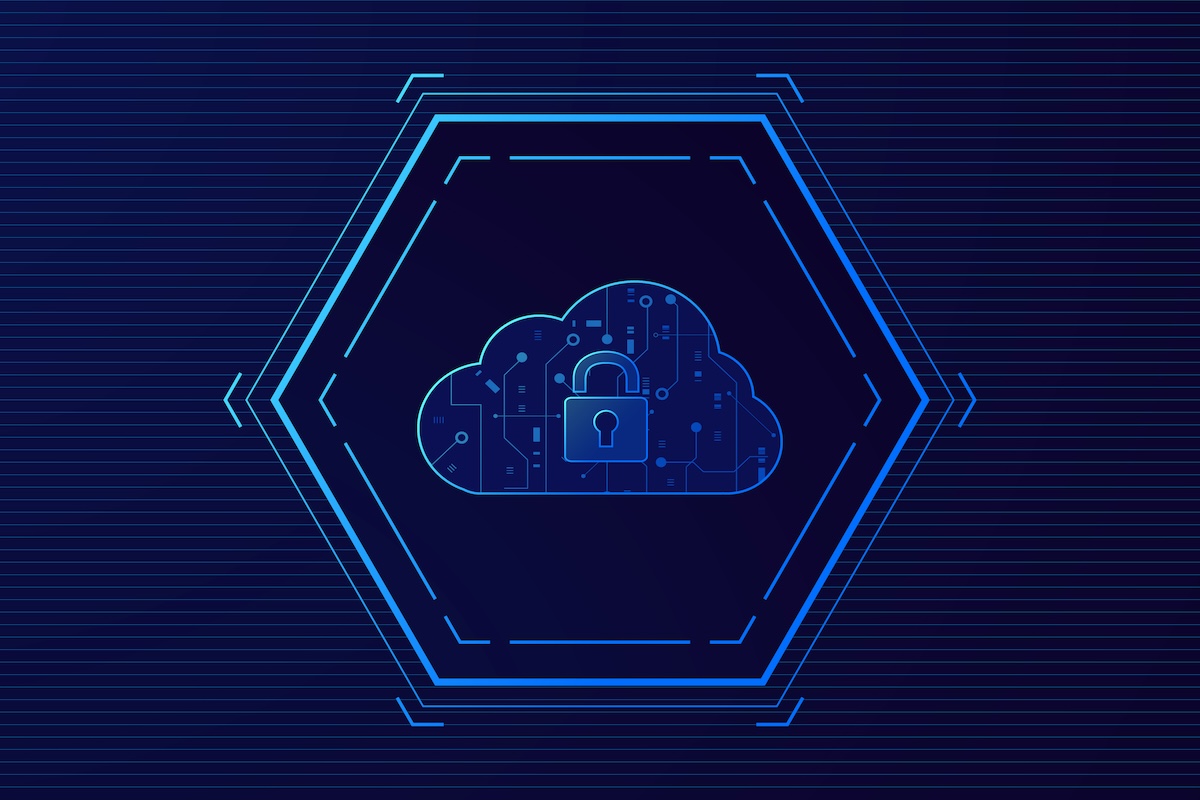An Introductory Guide to Cloud Security for IIoT
The state of industries has come a long way since the Industrial Revolution with new technologies such as smart devices, the internet, and the cloud. The Industrial Internet of Things (IIoT) is a network of industrial components that share and process data to gain insights. But as IIoT involves sensitive data and life-critical operations, this also comes with various IIoT cloud security challenges. Therefore, it is important to strengthen security.
In this post, we’ll look into the benefits and challenges of IIoT and understand the common threats IIoT faces. Finally, we’ll discuss IIoT cloud security best practices and the tools you need to secure your IIoT infrastructure.
Benefits of IIoT
Minimized Downtime
Organizations can get real-time data on machine performance and environmental conditions and plan for maintenance. This proactive measure minimizes downtime and enhances operational efficiency.
Data-Driven Decision-Making
Advanced analytics provide actionable insights to make data-driven decisions. Real-time analytics help in responding swiftly to changing conditions and competitiveness.
Safety and Compliance
IIoT detects hazardous conditions and trigger automatic shutdowns or alerts to protect workers. It also helps comply with regulatory requirements.
Cost Reduction and Resource Optimization
IIoT provides insights to create strategies for more efficient use of resources, leading to cost reductions. Stakeholders can identify demand patterns and track inventory to increase resource optimization.
Enhanced Customer Satisfaction
IIoT plays a crucial role in enhancing customer satisfaction as it leads to high-quality products and on-time delivery.
Innovation and New Business Models
IIoT opens doors for innovation and the development of new business models as it helps organizations identify what upgrades will be helpful and how they can make better profits.
The benefits of IIoT make it so attractive that one might want to jump right in and implement it. While IIoT has a lot of benefits, it also comes with some challenges.
Key Challenges in IIoT
If the challenges of IIoT are not addressed, it might turn out to be a bane more than a boon. So, let’s look into some common challenges in IIoT.
Security Vulnerabilities and Threats
A significant challenge in IIoT is securing the network, connected devices, and data as each component represents a potential entry point for cyber attackers.
Data Privacy and Compliance
IIoT devices generate sensitive data that are subject to strict regulatory requirements. Ensuring compliance with these regulations is a complex task.
Scalability and Network Latency
For large-scale industrial and fast-growing units, managing the increased volume of data and network performance and ensuring real-time processing become challenging.
Skills Gap
Successful deployment and management of IIoT solutions require skills in both IT and operational technology (OT), which can be challenging to find.
Legacy Systems
Many industrial facilities still rely on legacy systems, and integrating these systems with IIoT devices is a challenge.
These key challenges can be a make-or-break for any organization. It’s important to understand how to deal with them. Since the focus of this post is IIoT cloud security, let’s now look at that.
Common Attack Vectors and Types of Threats
IIoT is an attractive target for attackers because of the impact it has on organizations and how profitable it can be for attackers. Attackers can ask for unreasonable ransoms and create leverage over these organizations. If something goes wrong due to poor practices, it can cause catastrophic damage to organizations. Let’s look into some common attack vectors and types of threats that IIoT cloud security faces.
Device Compromise and Malware
Attackers can exploit vulnerabilities in device firmware or software to install malware, which can then be used to steal data, disrupt operations, or infiltrate cloud systems.
Man-in-the-Middle (MITM)
Attackers can steal or manipulate sensitive data by intercepting the communication between devices and the cloud. Manipulation of critical data or commands can cause operational disruptions and unreliable data insights.
Denial of Service (DoS)
DoS and DDoS attacks aim to overwhelm a system, network, or service, making it unavailable and impacting the operations.
Phishing and Social Engineering
Attackers try to trick employees into giving out sensitive information that they can use to breach the security of the IIoT infrastructure.
Insider Threats
Insider threats involve intentional or unintentional actions that cause harm by individuals having legitimate access to the organization’s IIoT infrastructure.
Supply Chain Attacks
Supply chain attacks can involve compromising software updates, hardware components, or third-party service providers.
Now that we’ve looked into the common security issues, let’s look into the best practices for IIoT cloud security.
IIoT Cloud Security Best Practices
Every technology has security concerns, and following best practices can help eliminate threats and reduce risks. While every organization is different and needs a tailored security posture, here are some IIoT cloud security best practices to start with.
Authentication and Access Control
Enforce the use of strong passwords and multi-factor authentication (MFA), and regularly review and update access using the principle of least privilege.
Encrypt Data
Encrypt data at rest and in transit to prevent unauthorized access to sensitive data. Use strong and industry-standard encryption protocols such as AES-256 and implement the latest TLS.
Regularly Update and Patch
Keep track of all components, check regularly for updates, and apply them. Regular updates help protect against exploitation of known security weaknesses.
Network Segmentation
Network segmentation helps contain a potential breach by limiting the spread. Segment your network based on the criticality of components and how easy they are to reach by an attacker. Enforce strong firewall and access control rules.
Continuous Monitoring and Incident Response Plan
Deploy IIoT cloud security monitoring tools to track system activity and detect suspicious, malicious, and anomalous activity. Create extensive SOPs for active response. This helps in remediating an attack before it could cause harm. Create an incident response plan including roles, responsibilities, and procedures, and regularly update it.
Security Awareness
Hold regular security training and awareness programs for all employees. Encourage reporting of suspicious activities and provide clear guidelines on how to address potential security incidents.
These best practices are just something to begin with. You have to additionally evaluate your IIoT infrastructure and implement IIoT cloud security accordingly. Taking a proactive security approach can help you reap the benefits of IIoT while mitigating the associated risks.
Useful Tools for IIoT Cloud Security
To implement a strong security posture, it is important to choose the right tools. So, let’s look into some useful tools for IIoT cloud security.
Endpoint Security Tools
Endpoint security solutions are critical for protecting IIoT devices. Deploy endpoint security solutions across all IIoT devices to ensure continuous protection and monitoring.
Network Security Tools
Network security tools help secure communications between IIoT devices and cloud systems, preventing unauthorized access and data breaches.
Identity and Access Management (IAM) Solutions
IAM helps enforce strong authentication protocols and access controls. These solutions help ensure that only authorized personnel can access sensitive IIoT data and cloud resources.
Continuous Monitoring and SIEM Solutions
Continuous monitoring and Security Information and Event Management (SIEM) solutions provide real-time visibility into IIoT cloud security, ensuring rapid detection and response to security incidents.
Vulnerability Management Tools
Vulnerability management tools help identify and remediate security weaknesses within IIoT devices and cloud systems. Regularly scan IIoT devices and cloud systems for vulnerabilities, and promptly address identified issues.
Cloud-Specific Security Solutions
Cloud-specific security solutions provide comprehensive security controls, visibility, and compliance management tailored for cloud environments. Most cloud service providers have several security features and solutions and also allow you to integrate additional tools to enhance IIoT cloud security.
Secure Data Storage Solutions
Data is the core of IIoT, and you need a tool that can handle IIoT-specific data securely. InfluxDB is one such solution. It provides real-time insights from any time series data with a single, purpose-built database. InfluxDB focuses on security with its security program including:
- regular third-party penetration tests
- continuous security management and monitoring
- industry-standard encryption
Conclusion
IIoT is a great technology for industries, and it’s our responsibility to make the best use of it. By connecting industrial devices, machines, and systems, IIoT facilitates real-time data collection, analysis, and automation. However, IIoT also comes with some security challenges. In this post, we discussed some IIoT cloud security challenges and best practices to secure IIoT infrastructures. These best practices are a baseline, the bare minimum, and organizations must implement additional security measures for enhanced security. The path to embracing the true power of IIoT is through proactive security!
About the author
This post was written by Omkar Hiremath. Omkar is a cybersecurity team lead who is enthusiastic about cybersecurity, ethical hacking, and Python. He is keenly interested in bug bounty hunting and vulnerability analysis.



